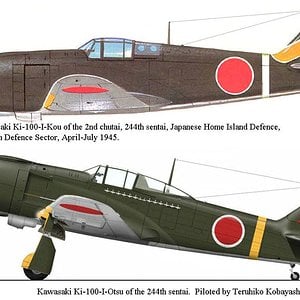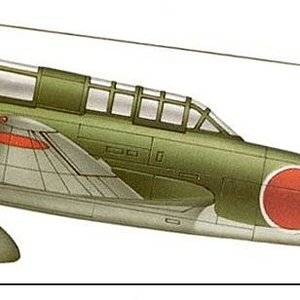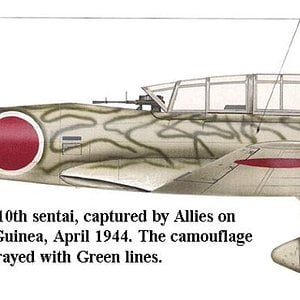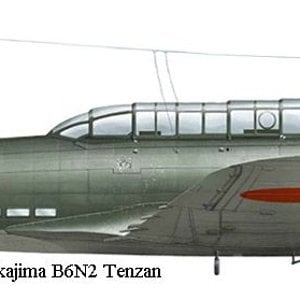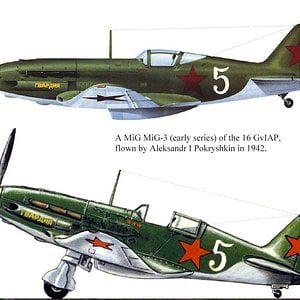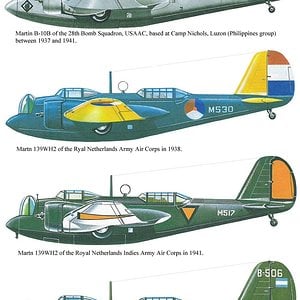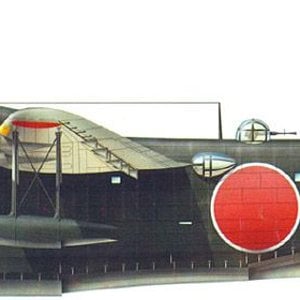Navigation
Install the app
How to install the app on iOS
Follow along with the video below to see how to install our site as a web app on your home screen.
Note: This feature may not be available in some browsers.
More options
You are using an out of date browser. It may not display this or other websites correctly.
You should upgrade or use an alternative browser.
You should upgrade or use an alternative browser.
The Nakajima B6N Tenzan (Heavenly Mountain), Allied reporting name: 'Jill', was the Imperial Japanese Navy's standard carrier-borne torpedo bomber during the final years of World War II and the successor to the B5N 'Kate'. Due to its protracted development, a shortage of experienced pilots and the United States Navy's achievement of air superiority by the time of its introduction, the B6N was never able to fully demonstrate its combat potential.
The B6N Tenzan began reaching front-line units in August 1943 but only in small numbers. The intent was to gradually replace all of the older B5N Kate torpedo planes then operating aboard the carriers of the Third Fleet at Truk Atoll in the Caroline Islands. However, the B6Ns were prematurely committed to battle when increased Allied naval activity in the Solomon Islands indicated a likely invasion at Bougainville. In response to this threat, the IJN initiated Operation Ro. During this operation the IJN lost 40 Tenzans.
On 19 June 1944, the B6N made its carrier-borne combat debut at The Battle of the Philippine Sea, operating in an environment where the U.S. Navy had virtually complete air superiority. Subsequently, it failed to inflict any significant damage whatsoever whilst taking heavy losses from the U.S. Navy's F6F Hellcat fighter.
The planes were extensively used in the Battle of Okinawa where they were also used for kamikaze missions for the first time.
Info: Wikipedia
http://en.wikipedia.org/wiki/Nakajima_B6N
Profile: Wings Palette
http://wp.scn.ru/en/
The B6N Tenzan began reaching front-line units in August 1943 but only in small numbers. The intent was to gradually replace all of the older B5N Kate torpedo planes then operating aboard the carriers of the Third Fleet at Truk Atoll in the Caroline Islands. However, the B6Ns were prematurely committed to battle when increased Allied naval activity in the Solomon Islands indicated a likely invasion at Bougainville. In response to this threat, the IJN initiated Operation Ro. During this operation the IJN lost 40 Tenzans.
On 19 June 1944, the B6N made its carrier-borne combat debut at The Battle of the Philippine Sea, operating in an environment where the U.S. Navy had virtually complete air superiority. Subsequently, it failed to inflict any significant damage whatsoever whilst taking heavy losses from the U.S. Navy's F6F Hellcat fighter.
The planes were extensively used in the Battle of Okinawa where they were also used for kamikaze missions for the first time.
Info: Wikipedia
http://en.wikipedia.org/wiki/Nakajima_B6N
Profile: Wings Palette
http://wp.scn.ru/en/


